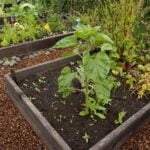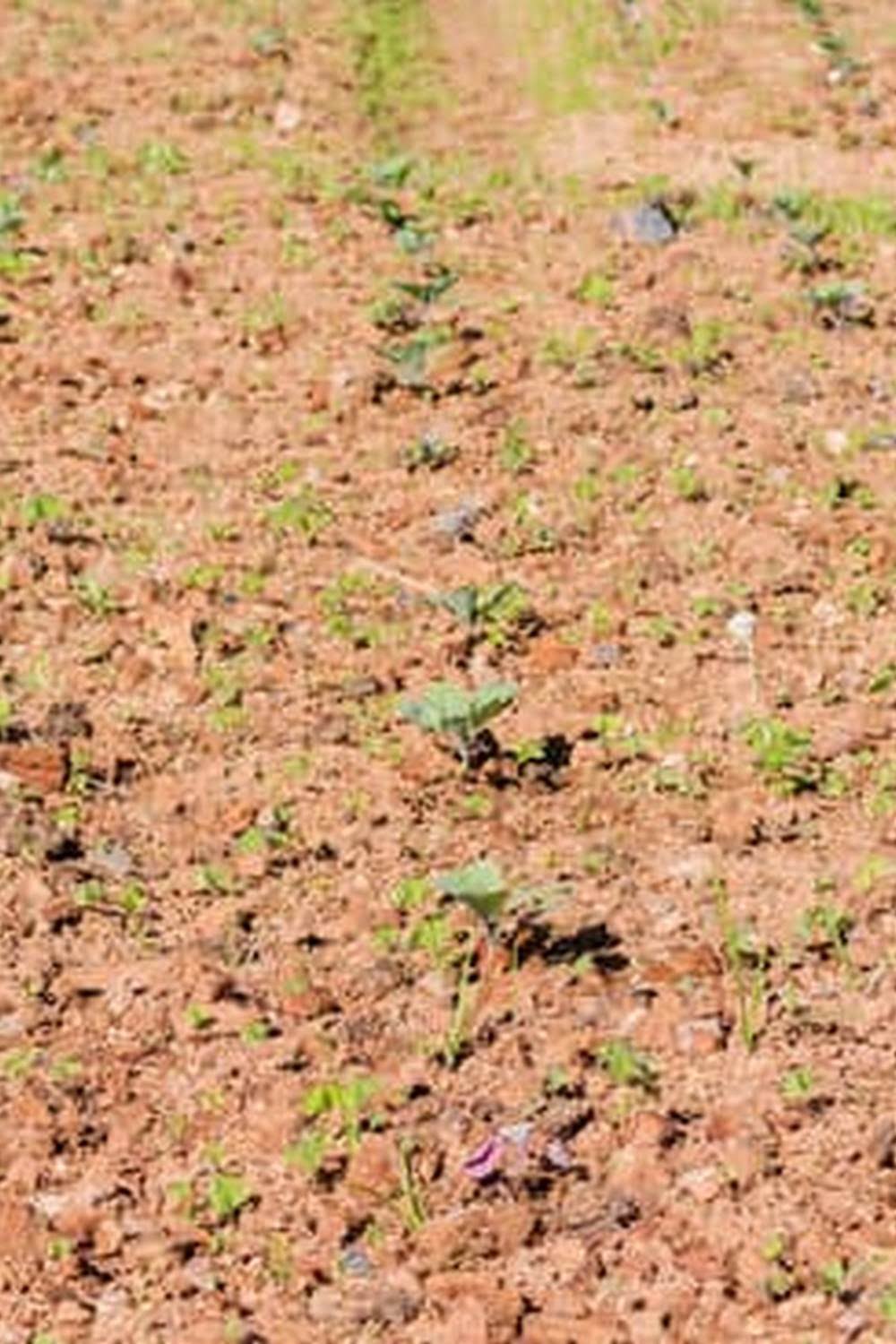Introduction
Sawdust is a by-product of woodworking that is created when sawing, planing, or sanding wood. It consists of small particles that have been separated out of a piece of wood. In the right context, sawdust can be an excellent addition to a vegetable garden because it has properties that can improve soil health and make it easier to grow crops. On the other hand, it may cause certain problems if not used correctly.
When used correctly, sawdust can be an excellent tool for improving the fertility and tilth of soil in a vegetable garden. As a carbon-rich material, adding sawdust to the soil can increase its organic matter content which helps to improve drainage and aeration as well as reducing compaction. It also adds important macro- and micronutrients such as phosphorus and calcium as well as trace elements like copper which are essential for plants to thrive. In addition, because sawdust is slow-releasing nitrogen, it improves soil fertility over time without the need for chemical fertilizers.
However, there are some negative aspects associated with using sawdust in a vegetable garden that should be considered carefully before adding any substantial amount to your soil. Firstly, while many nutrients such as potassium and calcium are added by adding sawdust to soil these may come in an unusable form until they are broken down by microorganisms into compounds that plants can take up – this process takes several months so can delay cropping time significantly unless treated with compost or fertilizer. Secondly too much sawdust in one spot weakens overall plant growth due to its high C:N ratio (carbon-to-nitrogen), meaning there is more carbon than nitrogen available for uptake by plants. Lastly, residual wood dust may contain pests or disease organisms which could damage your crop if it’s not handled properly before use – you should always check for this kind of contamination before introducing any type of wood debris into your garden space.
In conclusion, sawdust has potential benefits for improving the quality of soil in your vegetable garden; however, careful consideration needs to be taken since there are potential negatives associated with its use as well including excessive C:N ratios and contamination from disease organisms or pests contained within the dust itself.
Safety Considerations
When utilizing sawdust in a vegetable garden, it is important to consider both the potential benefits and risks. Sawdust can be used as a mulch to help conserve moisture around plants, feed beneficial soil microorganisms, and provide an easily renewable source of organic material that can improve soil structure. That said, there are also safety considerations to keep in mind when using sawdust in gardening.
First off, you should only use untreated wood products in your vegetable garden –chemically treated lumber may leach harmful preservatives into the soil and pose a threat to plant health. Additionally, it is important to check with local wood suppliers for information on what kind of tree species the sawdust came from; some species may contain high levels of toxins which naturally occur in the specific trees and can have detrimental effects if absorbed by plants.
Too much sawdust also has its drawbacks as well; it has been shown that large amounts of this mulching material can inhibit plant growth due to a decrease in nitrogen levels within the soil environment. As such, you’ll want to make sure that sawdust is mixed with other healthy organic materials at least partially before applying anywhere near your vegetables. With all these considerations kept in mind, though, carefully applied sawdust can greatly enhance garden productivity!
Types of Sawdust
Sawdust is wood material that has been ground up into small particles. It can be an excellent source of organic matter for your vegetable garden when used effectively. Different types of sawdust have varying levels of nutrient value and may contain toxins, depending on the type of wood it’s derived from. There are two primary categories of sawdust: hardwood and softwood.
Hardwood debris is often coarser and more dense than softwood debris, so must be used with caution as certain types can be alkaline with a pH level above seven, which may burn or kill plants when placed directly onto soil. Sawdust from deciduous trees like birch, chestnut, elm, maple and oak work well in compost piles; however, this type of sawdust should not be used to directly mulch the soil around vegetables due to its high alkalinity levels.
Softwood powders such as cedar, fir and pine are acidic in nature and their small particle size allows them to easily disperse across the vegetable garden surface before settling into the base layers of soil. Softwoods contain few nutrients but they do increase bacterial activity that helps break down organic matter in soils. They also absorb moisture well; this helps to decrease evaporation during hot days while increasing vegetable growth efficiency during colder months. Softwood saw dust can make an effective mulch for vegetables during periods of extreme temperatures – both hot and cold – while providing insulation throughout the growing season
How to Add Sawdust to a Vegetable Garden
Step 1: Collect and prepare sawdust for use in your garden. There are a few things you need to know prior to using sawdust in the vegetable garden. For starters, make sure that the material is dust-free, not chemically treated, and untreated with any oils or biocides that could contaminate your vegetable plants. Sawdust works best when finely ground–sometimes this can be achieved by simply shredding it–and is best suited for sandy soils.
Step 2: Add sawdust to existing soil. Before adding sawdust to a vegetable garden, consider the soil type. The amount of sawdust used should correspond to the size of the available space; for example, for an area measuring roughly 10 square feet (3 m2), approximately 3-4 inches (7.6-10 cm) of sawdust should suffice. The material should be added in even layers over any existing soil and then lightly tilled into place before planting vegetables above it.
Step 3: Make sure to water the soil After applying sawdust to the area where vegetables will be planted, make sure water them so that the material has an adequate chance to settle; some serious moisture will also help decrease acidity levels in heavily acidic soils and prepare them for subsequent crops. With consistent watering over a period of time, organic matter supplied by the sawdust will break down as it’s digested by worms and other beneficial microorganisms living in the soil.
Step 4: Manage weeds vigilantly during growing season If allowed to gain a hold through unchecked germination, weeds can quickly become invasive species within a vegetable garden bed filled with organic matter like sawdust – they compete aggressively with edible plants for light, water, nitrates, etc., reducing quality yields in vegetables substantially as they take their toll on root growth/development opportunities latent beneath ground level.
Nutrient Content and Nutrient Availability
Sawdust, which is a byproduct of sawing trees, can be useful when added to some vegetable gardens. Due to its finely-textured consistency, it acts as an effective mulch, suppressing weeds while keeping the soil cool and moist. Sawdust is also a low-cost or free amendment that can be easily found and applied with minimal effort.
However, sawdust also has important implications in terms of nutrient content and nutrient availability. Wood materials have high carbon contents compared to other organic materials, meaning that adding sawdust will increase the C:N ratio (Carbon:Nitrogen) of the soil. As a result of this high carbon content, much of the nitrogen in the soil is quickly used up during decomposition processes when the sawdust added to soils. As such, lengthy composting periods are essential to make sawdust an effective addition for improving soil quality before being incorporated into vegetable garden beds.
Moreover, any NPK fertilizers (Nitrogen-Phosphorus-Potassium) must be applied more liberally after adding sawdust as these nutrients are quickly depleted from the soil; otherwise nutrient deficiencies may occur in crop production. For example, due to limiting nitrogen availability caused by adding the wood source material (in this case – sawdust), stunting and yellowing of plant leaves – known as chlorosis – can develop over time. Additionally, other micronutrients like manganese and iron may also become deficient if not supplemented with fertilizers as well. In conclusion, despite having many benefits from reducing weeds and maintaining moisture retention in soils, it is essential to manage how much and how often sawdust is added to vegetable gardens for optimal results over time in terms of improved soil health for healthy crop production.
Best Practices for Using Sawdust in a Vegetable Garden
Integrating Sawdust Into Beds: An even layer of sawdust can be spread over an existing vegetable bed to help mulch and conserve water. To ensure the soil in the bed stays nutrient rich, check pH level balance before and after adding sawdust. Adding too much sawdust can lead to a decrease in nutrients so it is important to incorporate nitrogen-rich fertilizers or compost around the base of plants when sawdust is added.
Maintaining Proper Levels: Applying too much sawdust will cause nutrients to leach out of the bed, as well as block air pockets for roots. Sawdust should remain no more than one inch deep throughout the entire garden, with thinner layers being used around seedbeds and bare ground. Monitor plant health after adding sawdust so any issues can be addressed quickly if problems arise.
Troubleshooting Common Issues: If poor soil drainage is an issue due to large clumps of compacted sawdust, aerate the soil by using a rake or tilling it into small pieces. If pests are becoming overly prevalent, keep an eye out for signs of insect damage or eggs on leaves and use insecticides as needed with caution and following directions closely. Finally, consider covering beds with landscaping fabric after adding sawdust to reduce weeds growths around the garden
Conclusion
The overall conclusion to using sawdust in a vegetable garden is that it can be a great way to improve nutrient uptake and water availability for vegetables. However, as with any material used in the garden, there are potential risks. Sawdust needs to be aged or composted for at least 6 months before adding it to the garden and mixed thoroughly into the soil. If it is not aged properly, it may contain disease-causing organisms or toxins that could harm crops. Additionally, if over-applied, sawdust can create acidic soil conditions which would inhibit plant growth and limit pest and disease control.
In terms of benefits, when used appropriately sawdust can help add organic content to improve soil structure, provide additional nutrients for plants, increase water retention and penetration, reduce weeds and pests and help retain heat in the root zone. The best way to use sawdust in a vegetable garden is through composting or mixing small amounts with existing soil layers before planting a crop.

If you’re looking to get into vegetable gardening, or are just looking for some tips on how to make your current garden better, then you’ve come to the right place! My name is Ethel and I have been gardening for years. In this blog, I’m going to share with you some of my best tips on how to create a successful vegetable garden.





